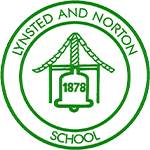Design and Technology
Vision
Design is not just what it looks like and feels like. Design is how it works.' Steve Jobs.
Intent
The Design and technology scheme of work at Lynsted aims to inspire pupils to be innovative and creative thinkers who have an appreciation for the product design cycle through ideation, creation, and evaluation. We want pupils to develop the confidence to take risks, through drafting design concepts, modelling, and testing and to be reflective learners who evaluate their work and the work of others. Through our scheme of work, we aim to build an awareness of the impact of design and technology on our lives and encourage pupils to become resourceful, enterprising citizens who will have the skills to contribute to future design advancements. Our Design and technology scheme of work enables pupils to meet the end of key stage attainment targets in the National curriculum and the aims also align with those in the National curriculum. EYFS (Reception) units provide opportunities for pupils’ to work towards the Development matters statements and the Early Learning Goals.
Implementation
The Design and technology National curriculum outline the three main stages of the design process: design, make and evaluate. Each stage of the design process is underpinned by technical knowledge which encompasses the contextual, historical, and technical understanding required for each strand. Cooking and nutrition* has a separate section, with a focus on specific principles, skills and techniques in food, including where food comes from, diet and seasonality.
Impact
The impact of the DT scheme of work at Lynsted & Norton Primary School is monitored through formative and summative assessment opportunities. Each unit has a unique quizz and knowledge catcher which is be used at the start and/or end of each unit.
After the implementation of Design and Technology lessons, pupils should leave school with a range of skills to enable them to achieve in their secondary education and be innovative and resourceful members of society.
The expected impact of following the scheme of work is that children be able to;
- Understand the functional and aesthetic properties of a range of materials and resources.
- Understand how to use and combine tools to carry out different processes for shaping, decorating, and manufacturing products.
- Build and apply a repertoire of skills, knowledge and understanding to produce high quality, innovative outcomes, including models, prototypes, CAD, and products to fulfil the needs of users, clients, and scenarios.
- Understand and apply the principles of healthy eating, diets, and recipes, including key processes, food groups and cooking equipment.
- Have an appreciation for key individuals, inventions, and events in history that impact our world.
- Recognise where our decisions can impact the wider world in terms of community, social and environmental issues.
- Self-evaluate and reflect on learning at different stages and identify areas to improve.
- Meet the end of key stage expectations outlined in the National curriculum for Design and technology.
Scheme
We use KAPOW to support our planning and ensures we achieve the aims set out in the National Curriculum.
Assessment
DT is assessed throughout the topic starting with initial questioning about pupil’s prior knowledge, it continues in the design stage and whilst pupils are creating their final product. Photos are taken of the final product to record in books and post topic questions are asked to establish learnt knowledge and skills.
Inclusion
At Lynsted and Norton PS School Inclusion takes high priority, the DT curriculum is designed so that all pupils can achieve. Additional time may be given and adult support is always available to those pupils who need help with aspects of their project. Adaptive tools are used if required.
Adaptive Support:
DT Enrichment Week



